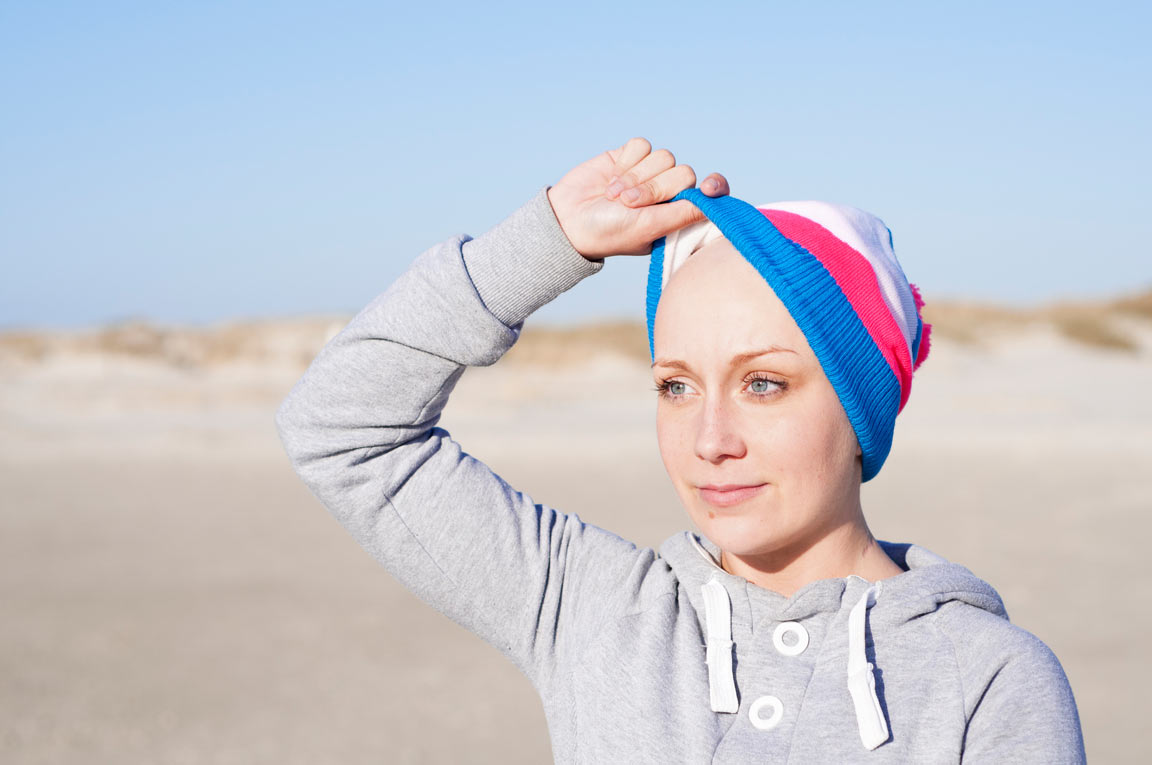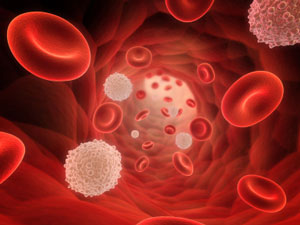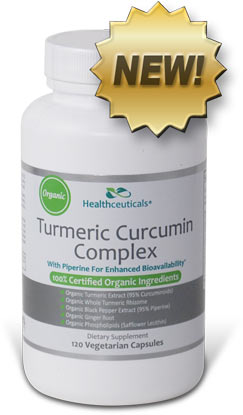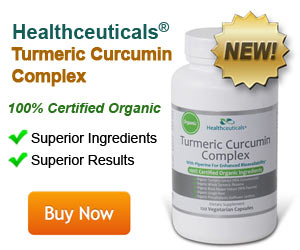

Natural Turmeric Help for Lymphoma and Multiple Myeloma
Lymphomas and myelomas form from abnormal B and T cell kinds of white blood cells. The turmeric compound curcumin could help prevent and treat lymphoma and multiple myeloma, according to some researchers. (vi.19)
What is Lymphoma?
Malignant tumors that occur in lymph tissue are called lymphomas. There are two main types of lymphoma: (vi.202, 203)
- Hodgkin's lymphoma or disease
- Non-Hodgkin's lymphoma
Hodgkin's lymphoma develops from DNA mutations in B cells. These abnormal, over-sized cells are also referred to as Reed-Sternberg cells. Most non-Hodgkin's types of lymphoma are B cell lymphomas, but some involve T cells. (vi.202)
Typical of cancer cells, both Hodgkin's and non-Hodgkin's lymphoma cells have uncontrolled growth. Lymphoma cells live longer than normal cells and crowd out healthy blood cells in the lymph nodes. Non-Hodgkin's lymphoma cancer can also spread to other parts of the lymphatic system, including the tonsils, thymus, and bone marrow. (vi.203, 204)
What is Multiple Myeloma?
Plasma cells are produced from B-cells. There are different types of plasma cells, and each produces its own type of antibody protein which helps the body fight infection. Antibodies are also known as immunoglobulins, and are formed from combinations of molecules referred to as heavy and light chains. (vi.205, 206)
Multiple myeloma (MM) is a type of cancer caused by overproduction of a specific plasma cell that produces M-protein types of immunoglobulin. Subtypes of M-proteins are defined by the particular combination of heavy chain and light chain molecules they are made of. There are 5 forms of heavy chains and 2 different light chain forms. The different types of M-proteins and the chains they're made of are important because some have a higher risk of progressing to cancer. (vi.205, 207, 208)
Plasma Disorders can Progress to Multiple Myeloma
In plasma disorders and MM, excess light chain molecules that are not bound to heavy chain molecules (free light chains) are produced and enter the bloodstream. Free light chains come in different forms. Abnormal ratios of the kappa to lambda forms of free light chains increase the risk of cancer in patients with plasma disorders. These abnormal ratios also worsen the prognosis of people who already have MM. (vi.205, 207)
Most cases of multiple myeloma develop from plasma cell disorders. Two of the more common types of plasma disorders are: (vi.206, 209)
These conditions typically show no clinical symptoms. Just as in MM, plasma disorders are characterized by overproduction of plasma cells that produce high levels of M-proteins — but less than those of MM. Approximately 19% of people with plasma disorders develop MM. (vi.206, 209)
Although current clinical practice is to monitor these patients for signs of progression, researchers are exploring ways to prevent these potentially precancerous conditions from becoming cancer. Results of recent clinical trials suggest that turmeric's curcumin compounds may help slow progression to multiple myeloma in patients with MGUS and SMM. (vi.207, 208)
Symptoms of Multiple Myeloma and Lymphoma
Symptoms for Hodgkin's and non-Hodgkin's lymphomas include: (vi.202-204)
- Chronic fatigue.
- Cough.
- Difficulty breathing or chest pain.
- Fever, with or without chills.
- Increased effects of alcohol.
- Itching.
- Night sweats.
- Pain in lymph nodes (after drinking alcohol).
- Painless swollen lymph node or group of lymph nodes.
- Swelling in abdomen.
- Unexplained, significant weight loss.
Symptoms for multiple myeloma depend upon the stage of disease. Premalignant plasma disorders are typically asymptomatic. Symptoms in patients who have fully developed MM include abnormal levels of or unexplained: (vi.205, 209)
- Anemia.
- Bleeding.
- Excess calcium in the blood (which affects mood and all organs).
- Infections.
- Kidney failure.
- Destruction of bone.
- Bone lesions or soft tissue masses in the skeleton.
- Compression of the spinal cord.
- Pain in bones.
What Are the Causes or Risk Factors for Lymphoma and Multiple Myeloma?
Hodgkin's lymphoma typically occurs in young adults and is not as common as non-Hodgkin's types of lymphoma. Possible risk factors for Hodgkin's lymphoma include: (vi.17, 201, 202, 210)
- Having a sibling with the disease.
- History of Epstein-Barr viral infection, such as infectious mononucleosis.
- Male gender.
- Suppressed or weakened immune system (e.g., from HIV/AIDS or organ transplant drugs).
Non-Hodgkin's types of lymphoma typically occur in older people, and are some of the most common types of cancer in the United States. Possible risk factors for non-Hodgkin's lymphoma include: (vi.124, 201, 203)
- Herbicide and pesticide exposure.
- HIV or history of Epstein-Barr viral infections.
- Helicobacter pylori bacterial infection (which can also cause stomach ulcers and gastric cancer).
- Drugs that suppress the immune system.
Plasma disorders can also lead to non-Hodgkin's lymphomas (chronic lymphocytic and lymphoplasmacytic types of lymphomas). (vi.208)
Possible risk factors for multiple myeloma include: (vi.205, 207)
- Chemical/carcinogen exposure — significantly higher risk in people exposed to high levels of:
- Herbicides and insecticides (such as farmers).
- Benzene and organic solvents (such as workers in the petrochemical industry).
- Possible increased risk with radiation and/or uranium exposure.
- Long term exposure to hair dye linked to higher incidence of MM.
- Hereditary link (possible).
- Herpes virus 8 (HPV8) infections (of bone marrow cells) have been found in patients with MM and in some MGUS patients.
- Male gender.
- Older age.
- Plasma disorders (MGUS and SMM in particular, with SMM representing a higher risk).
- In those with plasma disorders, certain types of M-proteins increase the risk of progression to cancer.
- Race (more prevalent in African Americans and black Africans than whites).
Turmeric Activity against Multiple Myeloma and Lymphoma
Results of lab, animal, and human clinical studies suggest that the turmeric compound curcumin may be able to directly and indirectly prevent and treat lymphoma and multiple myeloma. Curcumin could even help treat mantle cell lymphoma (MCL), an aggressive type of non-Hodgkin's lymphoma. (vi.19, 20, 67)
Turmeric's curcumin may also counteract cancer cell resistance to standard therapies. Conventional treatment for blood cancers sometimes includes combinations of chemo drugs, but some types (such as MCL) are often resistant to these medications. (vi.19, 20, 67, 212)
| CONDITION | STUDY RESULTS | TYPE OF STUDY |
|---|---|---|
MULTIPLE MYELOMA |
Oral doses of curcumin helped overcome MM resistance to conventional chemotherapy drugs. (vi.20) |
Animal |
MULTIPLE MYELOMA |
Lab (On cells taken from patients with MM.) |
|
MGUS (Plasma disorder that can lead to MM.) |
A clinical study was conducted involving MGUS patients with elevated M-protein levels. Patients were randomly assigned to take either 2 grams of curcumin or a placebo twice a day. Preliminary results showed the following: (vi.209)
|
Pilot Clinical Study  |
MGUS AND SMM (Plasma disorders that can lead to MM.) |
This study was an extension of the above randomized, placebo-controlled clinical trial. The patients were all given 8 g/day of curcumin (increased from the 4 g/day doses in the initial 3 month study). (vi.207) Results showed that curcumin helped normalize free light chain ratios. This suggests curcumin could help slow progression to cancer in some patients with MGUS and SMM. (vi.207) |
Open Clinical Trial  |
|
MANTLE CELL LYMPHOMA (A B cell type of non-Hodgkin's lymphoma.) |
May help combat obesity, a risk factor for non-Hodgkin's lymphomas. (vi.213) |
Lab |
CUTANEOUS T-CELL LYMPHOMA |
HDAC inhibitors such as curcumin may help treat this non-Hodgkin's type of lymphoma. (vi.212) |
Lab |
BURKITT'S B-CELL LYMPHOMA |
|
Lab |
CHEMORESISTANT B-CELL LYMPHOMA |
Curcumin increased the effectiveness of cyclophosphamide chemotherapy in lymphoma cells. (vi.212) |
Lab |
ADVANCED STAGE 3 MYELOMA |
A patient who rapidly progressed from MGUS to advanced myeloma underwent cycles of various chemotherapy drugs (including cyclophosphamide and thalidomodide) but the cancer still progressed. The chemotherapy also caused significantly toxic side effects. Stem cell therapy only produced a partial response, and further attempts to harvest stem cells failed. (vi.494) As her disease advanced, the woman conducted her own internet research and decided to try curcumin from turmeric. In early 2011, she began taking 8 grams/day of curcumin, in a single dose on an empty stomach each night. She added hyperbaric oxygen therapy once a week a few months later. (vi.494, 495) Since then her blood counts improved to normal levels. Clinical markers for myeloma declined to precancerous levels and continue to hold steady 5 years later. The woman continues to take daily curcumin and weekly hyperbaric oxygen therapy, but has not had any further chemotherapy or stem cell treatments. (vi.494) |
2017 Case Report |
Other Turmeric Compounds That May Help Block Lymphoma and Multiple Myeloma
Turmeric contains phytochemical compounds and nutrients in addition to curcumin that research suggests can have beneficial effects against lymphoma. These include:
| TURMERIC COMPOUND | EFFECTS |
|---|---|
Antioxidant compound that helps prevent thymic lymphoma caused by radiation. (vi.78) |
|
|
RESVERATROL (vi.83, 168) |
Caused ERSR-induced cell death in Burkitt's lymphoma cells. (vi.168) |
Join the 1000s of People Who Are Discovering the Benefits of Turmeric.

Healthceuticals® Turmeric Curcumin Complex
100% Certified
Organic ingredients
- Organic Turmeric Extract - standardized to 95% curcuminoids.
- Organic Whole Turmeric - provides full spectrum antioxidant, anti-inflammatory turmeric benefits, including turmerones and numerous vitamins, minerals, and phytonutrients
- Organic Black Pepper Extract - standardized to 95% piperine; dramatically enhances bioavailablity.
- Organic Phospholipids - markedly improve absorption.
- Organic Ginger - works synergistically with turmeric to provide more powerful benefits.
- Absolutely FREE of potentially harmful additives and fillers such as magnesium stearate.




